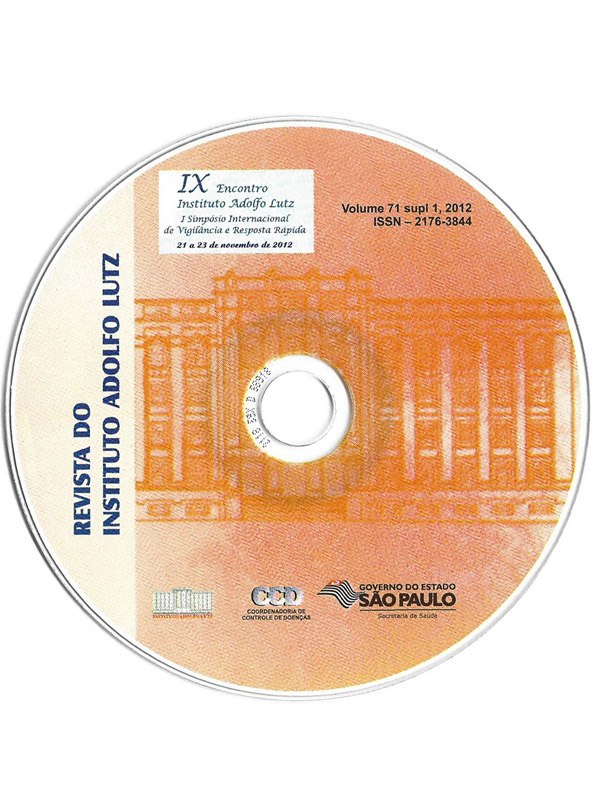Resumen
Whooping cough is an acute infectious disease caused by Bordetella pertussis, which has hyperendemic cycles every three or five years followed by decline. In 2001, the Center for Epidemiological Surveillance System deployed the Sentinel Epidemiological Surveillance of whooping cough in Sao Paulo state, made up of hospitals, health centers and the sentinel network of Instituto Adolfo Lutz (IAL) to improve the monitoring of the disease. The aim of this study was to evaluate the whooping cough behavior considering
the confirmed cases by the Regional Laboratory Centre of Instituto Adolfo Lutz in Sao Jose do Rio Preto - X (CLR-SJRP-X), public health reference laboratory for whooping cough in northwestern state of Sao Paulo, between 2001 and 2011. We analyzed 800 samples, using the culture medium Reagan-Lowe (RL), supplemented with 10% sheep blood and 40 mg/mL of cephalexin to transport the collected specimen and culture. The technique of RT-PCR, which tracks ptxS1 gene and the insertion element IS481 was introduced in October 2009. Total positivity was 9.5%. Among 433 suspected cases and 367 contacts, 62 (14.3%) and 15 (4.1%) were positive respectively. Until October 2009, before the implementation of RT-PCR, we analyzed 321 samples by culture with 19 (5.9%) positive cases. After this period, from 479 samples analyzed, 36 (7.6%) were positive by RT-PCR, 3 (0.6%) were inconclusive and 13 (2.7%) were also positive by culture. In children younger than 3 months, among the suspected cases for whooping cough, 34 (55.7%) were positive and in younger than 1 year, 55 (90.2%). We observed higher positivity in the years 2007 and 2008, with decline and new increase in 2011, with 16.3% of positive cases among the suspects. Laboratory data are essential for monitoring the whooping cough, which detected by culture or molecular methods, it is possible to evaluate their behavior in health programs.

Esta obra está bajo una licencia internacional Creative Commons Atribución 4.0.
Derechos de autor 2012 IAZC Almeida, DF Marques, EC Alves, FM TOL, RG Nicésio, DCB Vilela, D Leite
